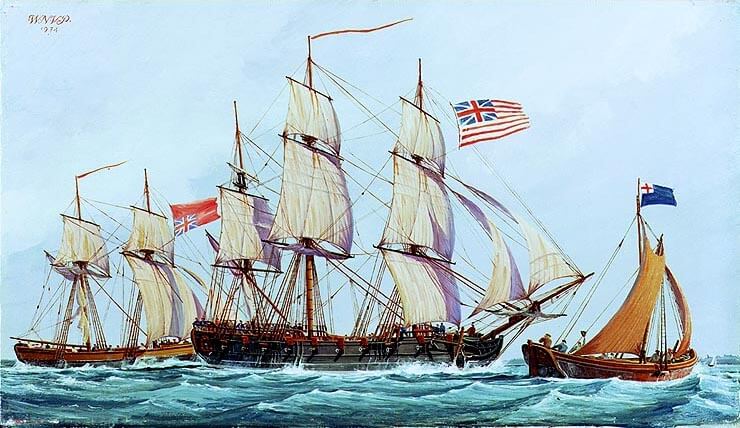
US Military History Throughout The Years
Short bits of history you know and some you may not!
- USS Columbus: Thursday, April 4, 1776 – On this day, during the Revolutionary War, the merchant ship Sally would be completed. Later in 1775 she would be bought by the new Continental Navy. Once purchased she would be renamed the USS Columbus, the first ship to bear that name in what would become the US Navy. In 1776 she would be part of an expedition to the Bahamas as part of an operation to seize military supplies. By 1778 she would be chase ashore off Rhode Island and be abandoned and later burned by the British.
- First Liberation: Tuesday, April 10, 1945 – During WW2 the US would liberate the Nazi concentration camp, Buchenwald. This was the first concentration camp to be found by the Allies in the west. For years claims had been made about the atrocities committed at these camps, and the Soviets had come across the first during their advances in the east. These claims were not readily believed till the US and other Allies saw what had been happening first hand. This is not to say the Allies rebuked the fact they existed, they just believed the claims were exaggerated for effect by the Soviets.
- Surrender: Sunday, April 9, 1865 – Meeting in the McLean House after the Battle of Appomattox Court House, Confederate General Robert E Lee surrenders to Union General Ulysses S Grant, ending the Civil War. The terms of surrender offered by Grant were generous and Lee accepted without argument. The terms allowed the Confederate forces to surrender and leave without imprisonment or prosecution for treason. Officers were allowed to keep their sidearms, horses and personal baggage while the enlisted were allowed to take home horses and mules so they could carry out spring planting on their return home. The defeated men were even supplied with food rations as theirs had nearly ran out. The next day Lee would give a farewell address to his army and on the 12th the Army of Northern Virginia marched to surrender their arms and colors, a ceremony that no Confederate officer wished to go through. The war would result in at least 1 million casualties, around 3% of the American population, with about 620,000 Soldiers dying. Two thirds of those deaths were from disease, due to the lack of proper medical treatment for wounds and sickness.
- Entering The War: Wednesday, April 4, 1917 – After years of sustaining neutrality, Congress votes to enter into WW1 on the Allied side in a vote of 90-6. Days later, on the 6th, Congress would formally declare war on Germany. Since the start of the war in 1914 America had maintained its neutrality even though the majority of America was sympathetic to the Allied cause and effort. Germany would drive the USA towards entering the war when it resumed unrestricted submarine warfare in the war zone, hoping to starve Britain out of the war. This combined with the discovery of the Zimmerman Telegram, a German invitation to Mexico to join the war as an ally, turned American policy to war. The US was not totally prepared for war at the time and would have to take measures to increase the capabilities and size of the Army before entering combat operations. The Navy however was more prepared for the war and would take less preparation.
This week’s featured products.
Best-Selling Military Gear
-

North American Rescue GEN 7 CAT Tourniquet
$29.99 Select options -

USGI M249 SAW Ammo Box, 200 Round
$11.99 – $16.99 Select options -

Eagle Industries Double M4 Mag Pouch
$3.99 Select options -

USGI Military Poncho Liner, Woobie Blanket
$19.99 – $49.99 Select options -

USGI 6 Magazine Bandoleer
$3.99 – $21.99 Select options -

USGI 1 Quart Canteen
$5.49 Select options -

North American Rescue Compressed Gauze
$4.99 Select options -

North American Rescue Survival Blanket
$1.59 Select options








